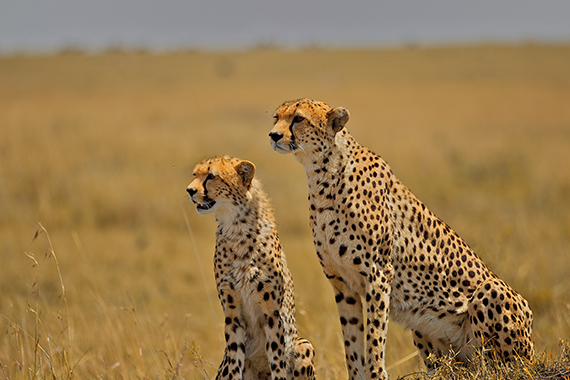Get to know the smiling, friendly people in many of Tanzania 's tiny villages - nearly untouched by modern time - or tour the busy, bustling cities of Dar Es Salaam, Arusha, and Moshi. Global Crossroad's varying safaris and tours in Tanzania provides amazing opportunities to experience Tanzania - a country of exciting extremes
Arusha national park
The Arusha national park covers Mt. Meru, a prominent volcano with an elevation of 4566m in the Arusha region of north eastern Tanzania. The park is small but has spectacular landscapes in three distinct areas. In the west, the Meru Crater funnels the Jekukumia River, the peak of Mt Meru lies on its rim. Ngurdoto in the south-east is grassland. Momella lakes in the north-east have varying algal colours and are known for their wading birds.
Mt. Meru is the second highest peak in Tanzania after Mt. Kilimanjaro. It forms a backdrop to views from the park to the east. Arusha National Park lies on a 300km axis of Africa’s famous national parks, running from Serengeti and Ngorongoro crater.
Tarangire national park
Tarangire National Park is the sixth largest national park in Tanzania after Ruaha, Serengeti, Mikumi, Katavi and Mkomazi. The national park is located in Manyara Region. Its name originates from the Tarangire River that crosses through the park and is the only source of water for wild animals during the dry season. Thousands of wild animals migrate to the Tarangire National Park from the Manyara National Park.
The park is famous for its large number of elephants, baobab trees and tree climbing lions. Tourists can expect to see any number of resident zebras and wildebeests and other less common animals. Other common animals include waterbuck, giraffe and olive baboons. It is also home to more than 550 bird species and the swamps are the focus of the largest selection of breeding birds. The park is also famous for the termite moulds that dot the landscape and the abandoned ones are often seen to be home for the dwarf mongoose.
lake Manyara national park
Lake Manyara is a shallow lake in the Natron-Manyara-Balangida branch of the East African Rift in Manyara Region of Tanzania. It is home to a set of diverse landscapes and wildlife. The Lake Manyara National Park is about 127 square miles (329km2) of which about 89 square miles (213km2) is covered by the waters (alkaline with a pH of about 9.5) of Lake Manyara.Further from the lake and outside of the village lands, lies the 44000 acre Manyara Ranch of which 35000 acres comprises the Manyara Ranch Conservancy. While not a park the conservancy is frequented by resident and migrating wildlife including elephants, lions, buffaloes, leopards and the more common plains game.
Ngorongoro Crater
The Ngorongoro Conservation Area (NCA) is located 180km west of Arusha in the Crater Highlands of Tanzania. Ngorongoro Crater is a large volcanic caldera. A population of approximately 25,000 large animals mostly the ungulates alongside the highest density of mammalian predators in Africa live is the Ngorongoro Crater. Large animals in the crater include the hippopotamus even though they are not very common, black rhinoceros. There are also wildebeests, zebras, elands and gazelles. It is home to ‘the Big Five’.
The crater has one of the densest known populations of lions. On the crater rim are leopards, elephants, mountain reedbuck and buffaloes. The rhinoceros are also found at the crater. From a distance in the large lake in the middle of the crater hundreds of flamingoes form a pink like border to the lake. Animals in the crater include most of the species found in East Africa but there are no topis, giraffes, impalas, oribis or crocodiles.
Serengeti national park
The Serengeti National Park is situated in the Mara Region and it is Tanzania’s oldest national park. It is famous for its annual migration of over 1.5 million white bearded or brindled wildebeests and over 250,000 zebras and for its numerous crocodiles. It is also known for its wealth in other resident wildlife particularly ‘the Big Five’. Serengeti is believed to hold the largest population of Lions in Africa due to the abundance of prey species. Leopards are commonly seen in the Seronera region but are present throughout the park. The African elephant are recovering from population lows due to poaching in the 1980’s and are largely found in the northern regions of the park. Black Rhinoceros are mainly found around the kopjes in the center of the park. African Buffaloes are still in abundance.
The park also boasts of other species including cheetah, gazelles, topi, hyena, impala, eland, African wild dog, waterbuck, baboons, and giraffes. It is also home for about 500 bird species including ostrich, kori bustard, crowned crane, secretary bird, lovebirds, marabou stork, martifal eagle and many other vulture species.
Featured Itineraries



